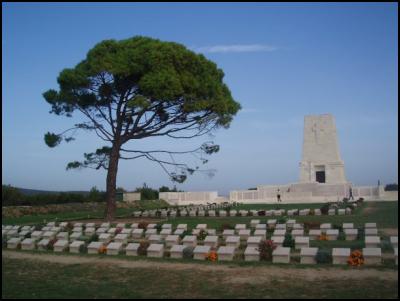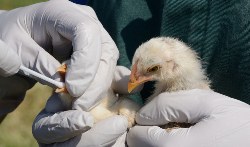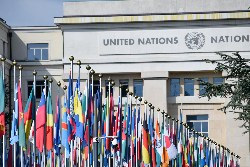Visiting Gallipoli: An Eerie Birthplace of Nations
Visiting Gallipoli: An Eerie Birthplace of Nations
by Tim Rossiter
Click to enlarge
When visiting the hallowed battlefields of Gallipoli the tiny port town of Eceabat is a very convenient base. Eceabat (Ed-jee-a-bart) is about ten km from ANZAC cove and the scene of all the courage and absurdity of the Gallipoli campaign 90 years ago. To get to Eceabat you have to get a 30 minute ferry from the larger port Cannakale.
After a day travelling north on the bus from Selcuk on the Mediterranean Coast I took a night trip across the water. It was a warm, clear night and all the stars seemed to be out above. Being so close to a place that is so grounded in our folklore on such a perfect night put me in a very thoughtful mood.
Surely some of those young soldiers would have looked up at that same sky years ago and thought ‘of all the places to be in this huge world what am I doing here?'
Going back there today it's hard to imagine the place as a battlefield and the clear waters and tranquil coves there seem better suited to leisure than war. The strategic position of the peninsula however means this place will forever be synonymous with war.
Then Admiral Churchill thought that opening up a second front in the east and knocking Turkey out of World War One would be of great importance. Apparently there was never meant to be a land invasion of the area and everybody including the Turks thought the much vaunted British fleet would breeze through the Dardanelles and onto Istanbul. There was a rush on the banks and near riots in Istanbul as the fleet drew near. It wasn't to be though and the combined British and French fleet were skittled by the defending Turkish vessels and their landmines forcing a change of tactics.
The ANZACs landed early morning on April 25 1915 but beached about 500 metres away from the position they set out for. This was to have disastrous consequences. The route from what is now known as Anzac cove to the higher ground was much more treacherous and sheer.
Amazingly on that first day amidst all the confusion and slaughter small groups of New Zealand and Australian soldiers made it all the way to the hills inland before being overcome.
This is heralded today as a remarkable feat of athleticism and courage by these previously untested colonials. Being there you appreciate it’s a huge distance to cover in such a small time and all uphill.
If there had been better organisation on this day (as many others) the result may have been quite different. As it was, these troops were not reinforced and died shoulder to shoulder in small defensive positions fighting the Turks. Historians know this because they have found empty shell casings alongside there remains which suggests this. This was as far inland as the allies got for the next three to four months. This was partially down to the brilliant leadership of the Turkish troops. Colonel Mustafa Kemel showed great foresight by disobeying German orders and immediately sending troops to cover the high ground around Chunuk Bair. If he had not have done this the ANZACs could have dug in and some believe the campaign could have been over within its’ first few days with a far different result.
On my tour we stopped off at ANZAC Cove and then headed up to Lone Pine. The scene of a huge battle and the Australian Memorial. The battle is popularised in the film ‘’Gallipoli’’ with Mel Gibson. Essentially the Australians were mercilessly ordered to charge into the machine guns of the Turks on the high ground which they did with tragic and predictable consequences. Many of the men died barely getting out of their trenches.
According to one old digger interviewed in a documentary screening before the tour, not one of his comrades refused to go even though it meant near certain death.
Further over is the peak of Chunuk Bair where the NZ monument is. Learning about Chunuk Bair and remembering Maurice Shadbolt’s film from an ANZAC day in years gone by I felt a wave of pride and patriotism. It is the highest point of the peninsula and a central part of the Allied August offensive of 1915 becoming the only success of that campaign. The New Zealanders were able to secure the peak and despite being cut off from reinforcements, hold it for two days amidst horrific opposition. Apparently 711 out of the 760 men who reached the summit became casualties.
The accounts tell of the desperation of the New Zealanders surrounded by the Turks below who just seemed to keep coming. The ANZACs could only build shallow trenches on the rocky summit and fired their weapons or those of their dead comrades until they were too hot to hold such was the intensity of the Turkish counter attack.
This was led by Mustafa Kemel himself who is said to have told his troops he didn’t just expect them to fight but to die with him.
He came close; taking a slug to the chest only to find it had been miraculously stopped by his pocket watch.
The surviving New Zealanders had held on for two days amidst both Turkish fire and shelling from the Allies ships before being relieved by a fresh British regiment. Unfortunately the British were overcome almost immediately and the Turks won back the crucial high ground. The ANZACs would never regain such a good position on the peninsula and the campaign became an untenable stalemate which concluded four months later with a loss of 100 000 men.
On the summit the New Zealand monument stands alongside that of Mustafa Kemel and lots of Turkish tourists were there paying tribute to their hero. I had a chat with some Turkish soldiers who must have been in their early twenties. They spoke of how important this place was to them and their country and I said I felt the same way as a New Zealander. It was a really nice encounter for each of us. Being about the same age trading stories about heroes who would have been fighting and dying together so many years before.
Clearly some great stories have come out of the campaign and many legends born and not just on the ANZAC side. It's hard to imagine but apparently the Turks and ANZACs had a mutual respect and even a kind of camaraderie despite the fact they were killing each others friends everyday. They used to share food and cigarettes and even sing songs to each other from their trenches. Some being as close as eight to ten metres away!
Mustafa Kemel the brilliant Turkish colonel became a politician and great leader after the war. He is now known as Ataturk - literally 'father Turk' and is responsible for creating the republican nation of Turkey from the defeated Ottoman Empire. You would be hard pressed to walk down any street in turkey without seeing a statue or likeness of the great man such is the cult that still surrounds him. And out of this disastrous campaign, we as New Zealanders and Australians were able to forge our own nations too. The ANZACs began to see themselves as unique and different from the English who they were fighting alongside, and it seems, were often poorly led by. The unquestioning loyalty to the Empire was shattered and the two fledging colonies were able to continue to develop their own culture, separate from mother England.
Tim Rossiter has been working abroad for nearly five years. Leaving New Zealand initially for Japan before rejoining many of his young counterparts in London. Despite the long hours of commuting and grey skies he enjoys it as it allows him the chance to indulge his passion for travel. He shares some of his experiences with Scoop readers.


 Gordon Campbell: On bird flu, AUKUS entry fees and Cindy Lee
Gordon Campbell: On bird flu, AUKUS entry fees and Cindy Lee Binoy Kampmark: Israel’s Anti-UNRWA Campaign Falls Flat
Binoy Kampmark: Israel’s Anti-UNRWA Campaign Falls Flat Peter Dunne: Luxon Gets Out His Butcher's Knife - Briefly
Peter Dunne: Luxon Gets Out His Butcher's Knife - Briefly Binoy Kampmark: Warring Against Encryption, Australia Is Coming For Your Communications
Binoy Kampmark: Warring Against Encryption, Australia Is Coming For Your Communications Gordon Campbell: On Fast Track Powers, Media Woes And The Tiktok Ban
Gordon Campbell: On Fast Track Powers, Media Woes And The Tiktok Ban Binoy Kampmark: Censorship Wars, Elon Musk, Safety Commissioners And Violent Content
Binoy Kampmark: Censorship Wars, Elon Musk, Safety Commissioners And Violent Content